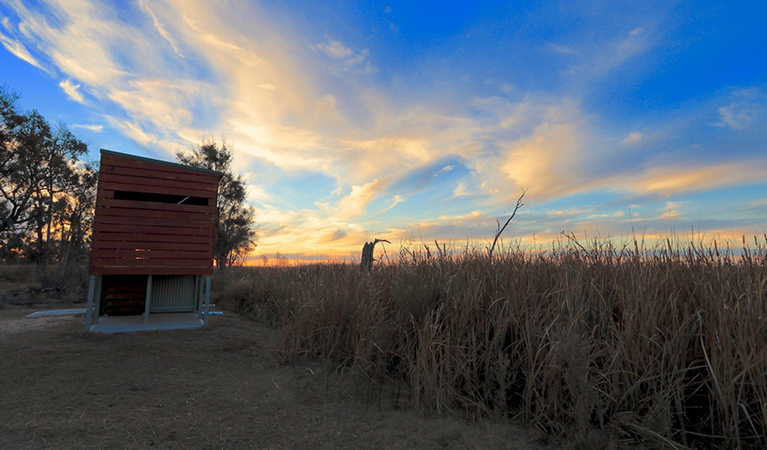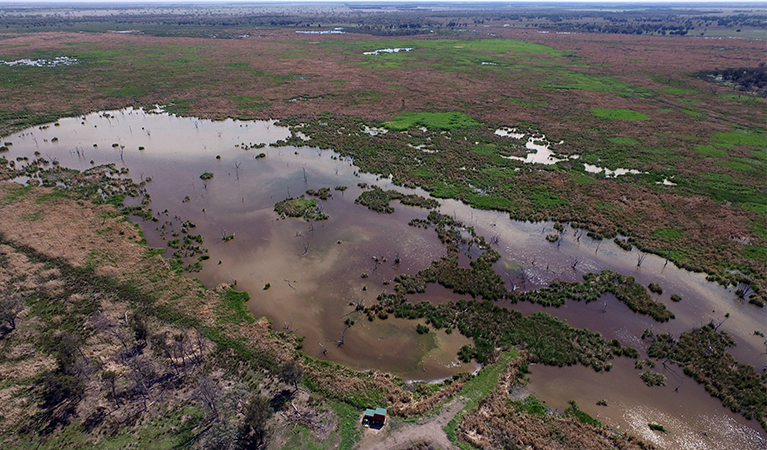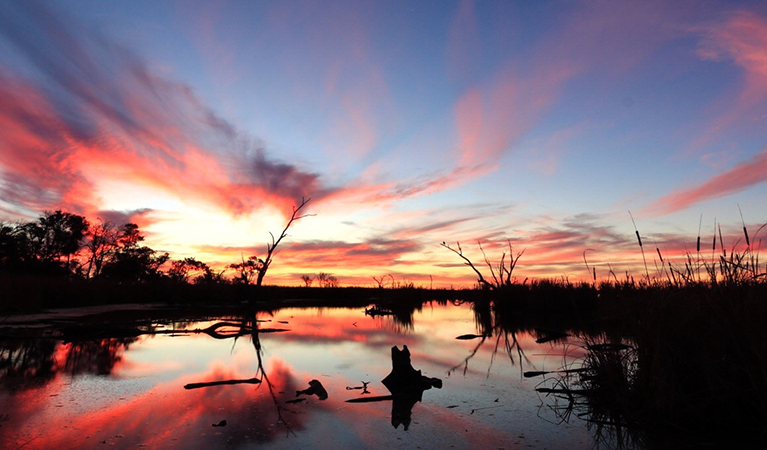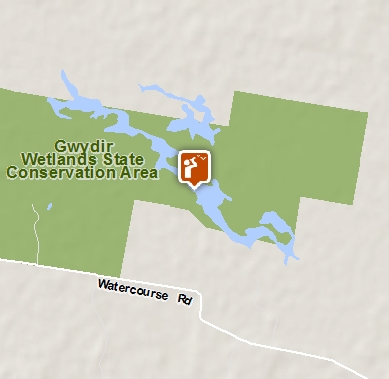Overview
Waterbird Lagoon bird hide in Gwydir Wetlands State Conservation Area is a must for birdwatchers. Located near Moree and Narrabri, see rare birdlife flock to Waterbird Lagoon when it fills with water.
- Accessibility
- No wheelchair access
- Grade
- Easy
- Opening times
5am to 9pm daylight savings time or 8pm at all other times
- What to
bring - Hat, snacks, drinking water, suitable clothing, insect repellent
- Please note
Access is during dry weather only, so it’s worth checking road conditions with Moree Tourist Information Centre before you set out.
Waterbird Lagoon bird hide gets you close-up to the rich birdlife, frogs and wildlife of one of the most significant wetland systems in NSW.
Up to 75 bird species flock to this Murray-Darling Basin wildlife haven when its semi-permanent waterholes fill with water. Nestled among rushes at the edge of one of the lagoons, the bird hide is the perfect spot to see birds go about their business, undisturbed.
Watch egrets, cormorants, darters, ibis, spoonbills and nankeen night herons step through the shallows. Remember to look up to see majestic white-bellied sea eagles soar overhead. If you’re lucky, you may even spot magpie geese, brolgas and endangered black-necked storks (Jabiru) – Australia’s only stork.
Bring your lunch for a peaceful picnic in the bird hide, or beneath a nearby gum tree. When you’re ready for a different point of view, take the unmarked 1km return stroll around the wetland and open woodland of belah trees. Launch your kayak into the lagoon if the water’s high. Linger till dusk to watch the sky light up in a dramatic sunset as frogs call all around you.
Subscribe to Naturescapes
Subscribe to our Naturescapes e-newsletter which is packed with the latest information, experiences and events in NSW national parks. Your next park adventure starts here.
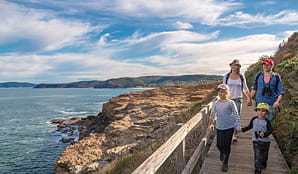
Saving Our Species program
Australia is home to more than 500,000 animal and plant species, many of which are found nowhere else in the world. Saving our Species is a statewide conservation program that addresses the growing number of Australian animals and Australian native plants facing extinction.
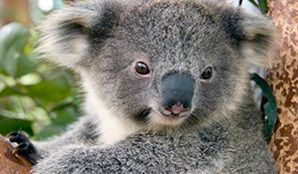
Operated by
- Narrabri office
- Monday to Friday, 8.30am to 4.30pm.
- 02 6792 7300
- npws.barwon@environment.nsw.gov.au
- Level 1, 100 Maitland Street, Narrabri NSW 2390. Accessible via Dewhurst Street.
Park info
- in Gwydir Wetlands State Conservation Area in the Country NSW region

